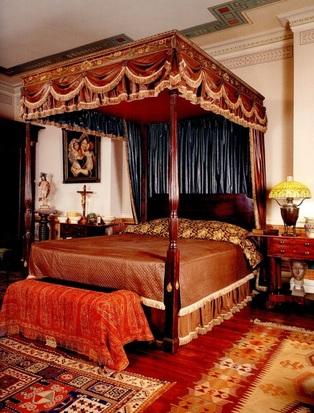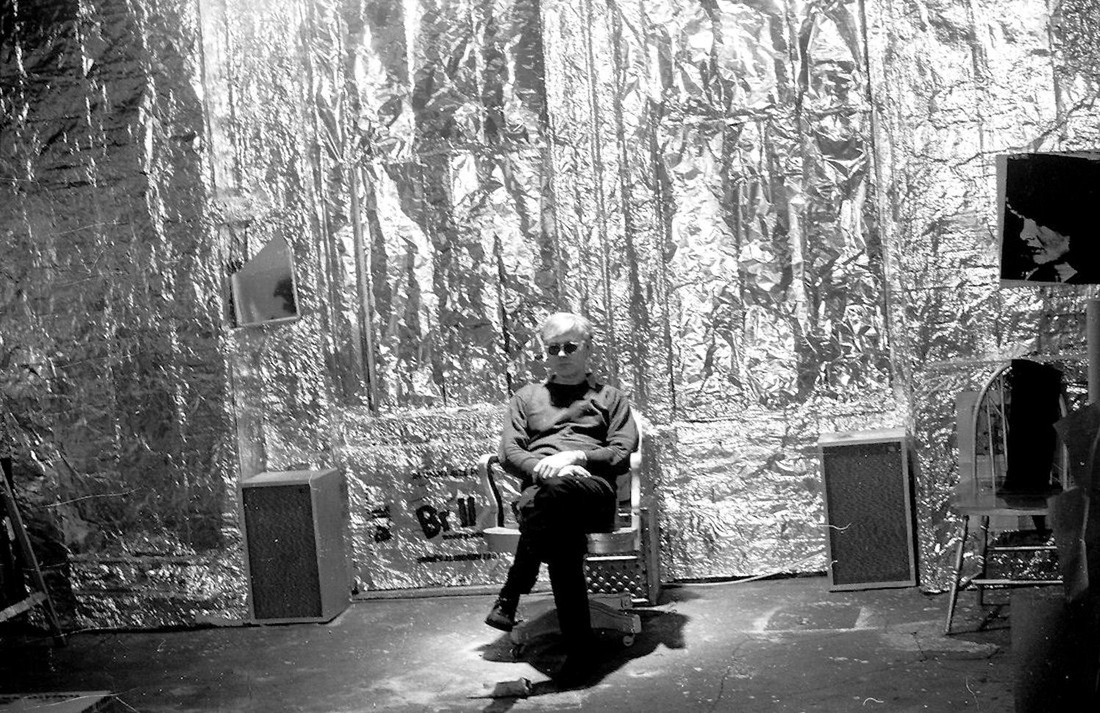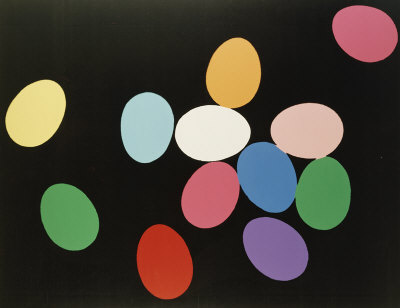Andy Warhol was an anomaly at a time when people still believed in a mass-produced American dream. Although he was not outspoken enough to be a preacher, through his art he became a prophet ushering in a new America. Warhol prompted questions in viewers by rebelling against the standards of the time. Taking preexisting cultural images like a Campbell's Soup can or a photo of Marilyn Monroe, he presented them back to the American public as art. These common images were transformed into icons mediating between the way viewers’ perceived themselves and the way they acted within culture.
Pop artists, among which Andy was one of the first, were reacting against the abstract expressionists of a prior generation. Expressionists attempted to express the Sublime or Transcendent by creating unique works of art—particulars by which the universal could be experienced.[1] Pop artists mobbed the particulars into non-existence through gross imitation, and in so doing revealed pop culture, a side of life society had been so engrossed in that they were unaware of its existence. Instead of carrying viewers into exotic locations and eras, as classical artists were wont to do, pop artists were fixated on the ubiquitous present of both time and space. By revealing pop culture they granted permission for people to celebrate it for what it was, without attempting to regain an older or better era.[2]
As the still-reigning King of Pop Art, to encounter Warhol is to experience a critique on one’s way of life.[3] Engaged viewers are led to contemplate their conception of what art actually is, and what creativity entails, as I was. Often, several layers of meaning emerge. For example, many of Warhol's earliest pieces were homoerotic drawings.[4] One might initially try to dismiss these as nothing more than pornographic images that Andy enjoyed creating as an open (but celibate) homosexual. But upon reflection, the drawings portray something more: The existence of homosexuals within a society that was too afraid to acknowledge them (for a great film on this theme, see the 2002 flick, “Far From Heaven” with Julianne Moore and Dennis Quaid).
Andy's public life served the same function as his art. Warhol lived a life characterized by “playfulness and the impulse to shock,” maintaining a “carefully constructed, witty, cool, inscrutable public persona.” This public persona was an art form in itself, intended to trigger responses normally kept bottled up by cultural pressure. That this was his intent is hinted at in the dichotomy between his public and private life. Andy was a practicing Catholic and attended mass and confession almost daily. Yet his wild parties were famous for their extravagance. And while his studio, The Factory, was decorated in flashy silver and pop images, the decor in his own home was more reminiscent of the Vatican. Andy was an observer, not a participant in the excesses around him. He was not a wild reveler at his parties; instead he was creating a safe space where hurting and searching people would have no fear of rejection or judgment.[5]
For example, his Eggs series depicts a dozen brightly colored eggs soaring through a black background. The eggs appear to be flying, having been captured in paint after being tossed high into the air. The bright colors break up the darkness, incarnating the vivacity of the Resurrection with color, motion, and historical religious symbolism. In the Byzantine Catholicism Andy had been raised in, colored eggs represent immortality and resurrection.[7] The piece is an Easter celebration which combines sacred imagery, as a mechanically reproducible silkscreen, pop methodology.
The Big C is my favorite piece in The Last Supper series. Variously sized images of Christ appear on a gigantic 116x390 inch canvas, along with several disciples, three motorcycles, a $6.99 price tag and an eagle. Another version of this piece also includes a potato chip logo and the word “locksmith.”[10] For me, as a whole The Big C brings to mind the crass marketing strategies used to sell Americanized Christianity as "even better than the real thing." Books, sermons, TV shows and even political campaigns use catch phrases and jargon to manipulate the masses, much like a multinational corporation capitalizes on consumer information to sell us those potato chips, all for a single low price. Motorcycles are symbolic of freedom, power, sensuality and rebellion, yet Christ is often typified as the antonym of these terms. Finally, as a religious piece, the title and “Big C” logo might refer to Christ, but Warhol copied the Big C graphic from an article about cancer. Multiple meanings emerge as we contemplate cancer as foreboding and death, even as we are reminded that the last supper was Christ's final meal before he was crucified.
With his life and art, Warhol was like a first time visitor to New York or L.A. who points her finger at the homeless person locals have learned to ignore. He was drawing attention to those parts of society mainstream culture refused to recognize, including those aspects of religion that religious people insist on ignoring. Rather than repetitiously following a faith learned by rote, with his Last Supper series, Andy took a snapshot of Christian America and hung it on gallery walls for all to see, just as he had done with the rest of American culture in his earlier works. Warhol’s faith enabled him to interact with American religiosity from within as he explored the “implications of a Catholic spirit in modern America.”[11] Those who have the eyes to see, both inside and outside of the church, may find the critique refreshing and much needed.
The Exhibit, Andy Warhol Portfolios: Life & Legends will be on display at Pepperdine University in Malibu, California until April 3, 2016.
Sources:
[1] Dillenberger, 26, cf. Paul Schrader, Transcendental Style in Film: Ozu, Bresson, Dreyer (University of California Press, Los Angeles, CA: 1972), 3. Ironically, Warhol returns to something similar to abstract expressionism with his Shadows series in 1978, cf. Dillenberger, 62.
[2] John Docker, Postmodernism and Popular Culture: A Cultural History (Cambridge University Press: New York, 1994), 118.
[3] Dillenberger, 27.
[4] James Elkins, On the Strange Place of Religion in Contemporary Art (Routledge: New York, 2004), 45-47.
[5] Dillenberger, 10.
[6] Dillenberger, 77.
[7] Cynthia Freeland, Art Theory: A Very Short Introduction (Oxford University Press: Oxford, 2003), 51.
[8] Dillenberger, 80.
[9] cf. Dillenberger, 90-91.
[10] Ibid., 93.
[11] Paul Giles, American Catholic Arts and Fictions (Cambridge University Press: New York, 1992), 278.




 RSS Feed
RSS Feed
